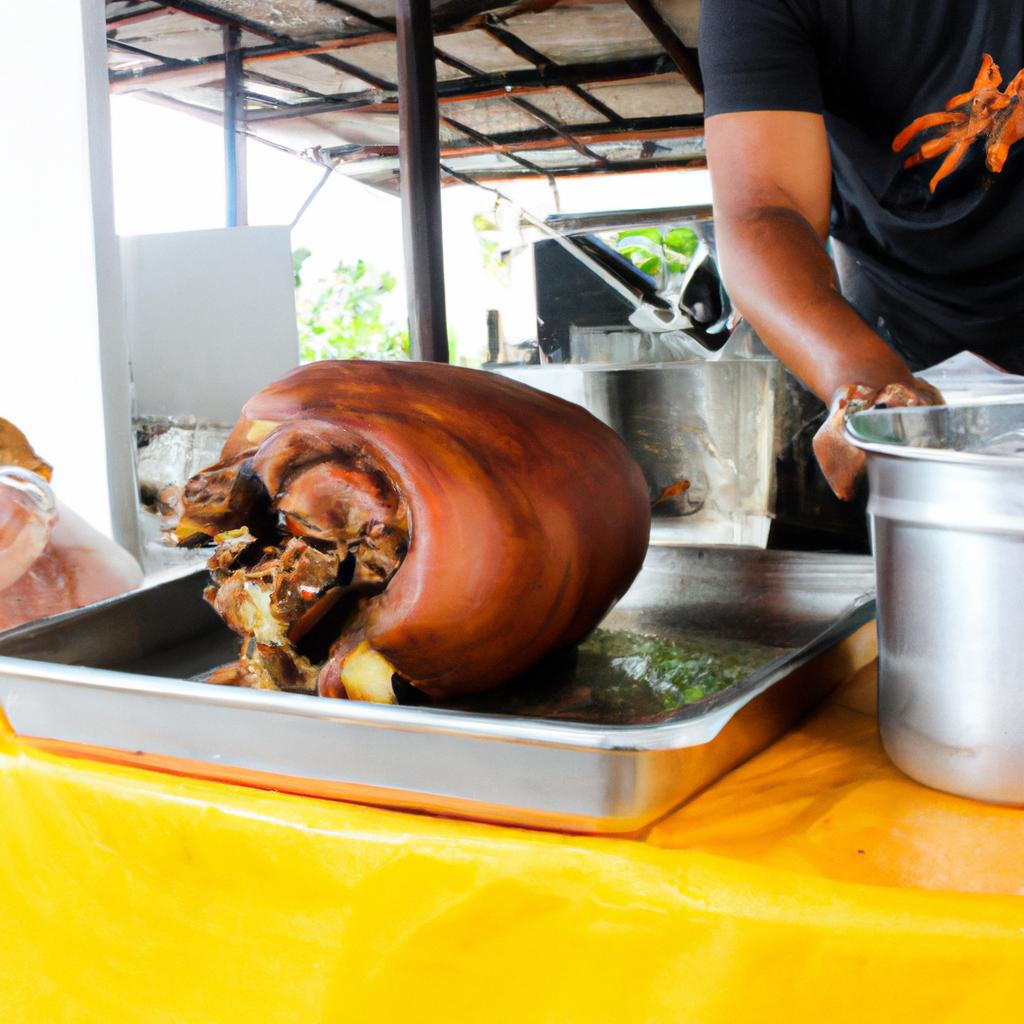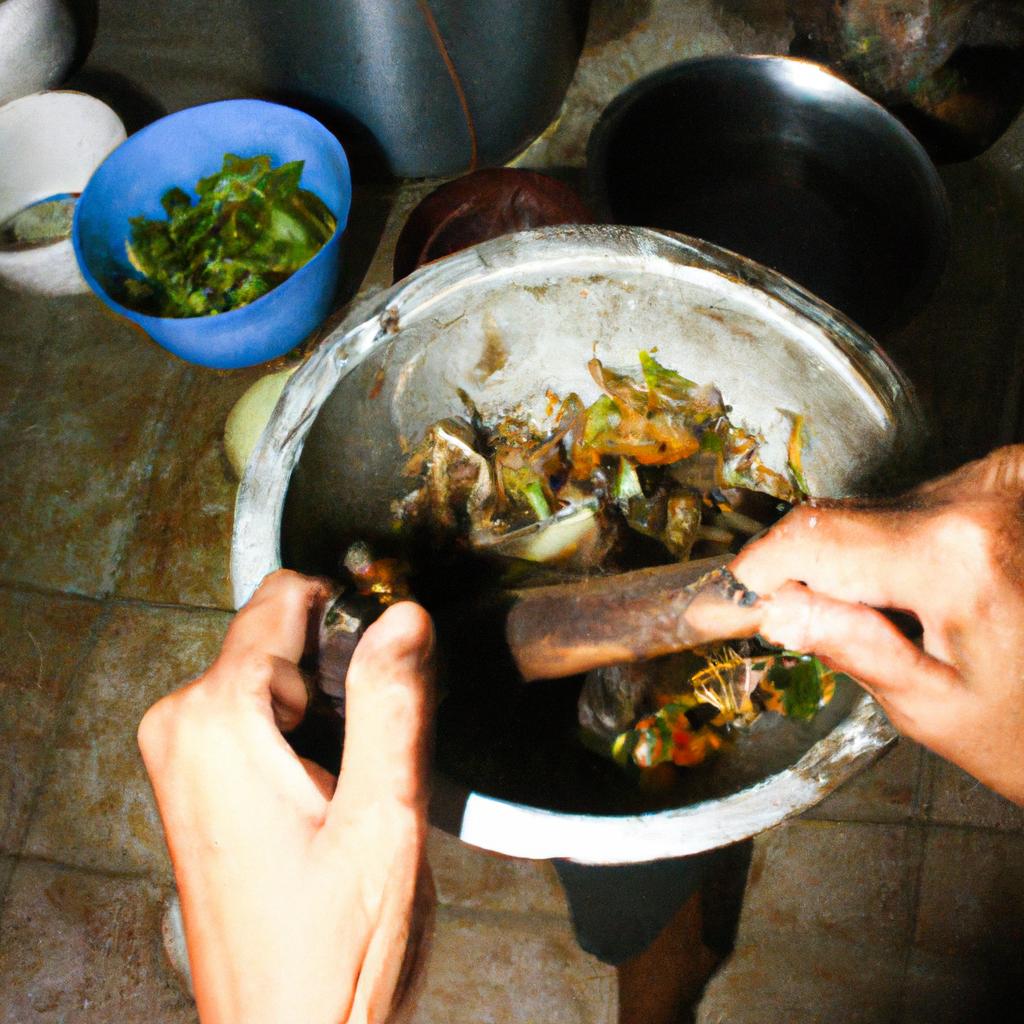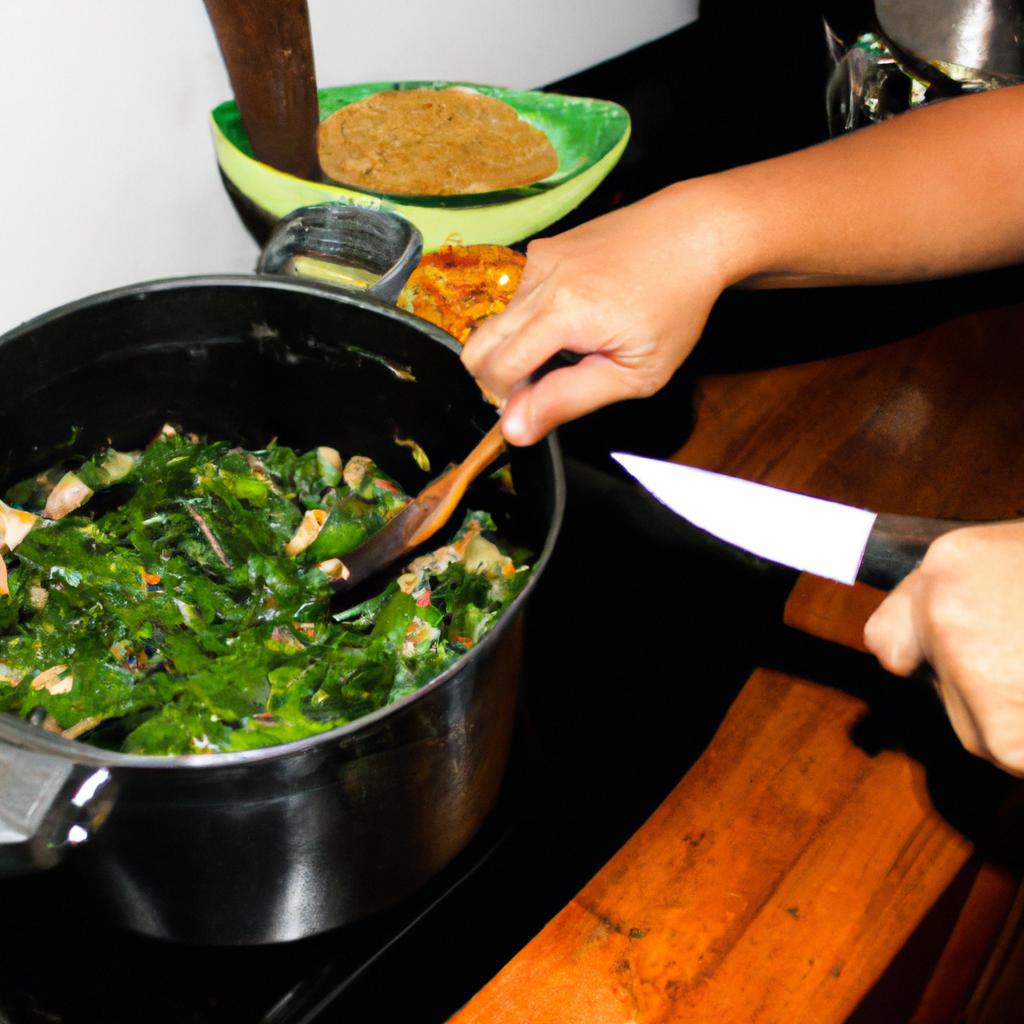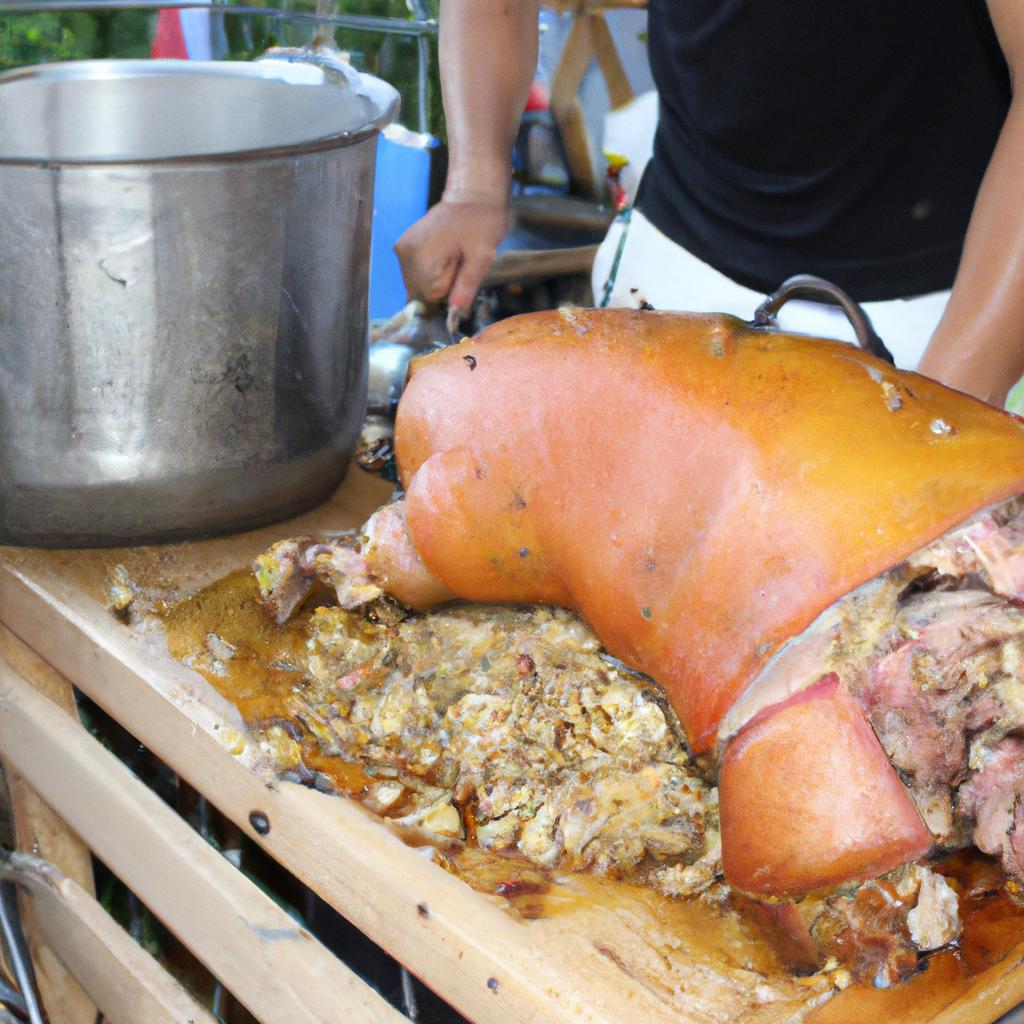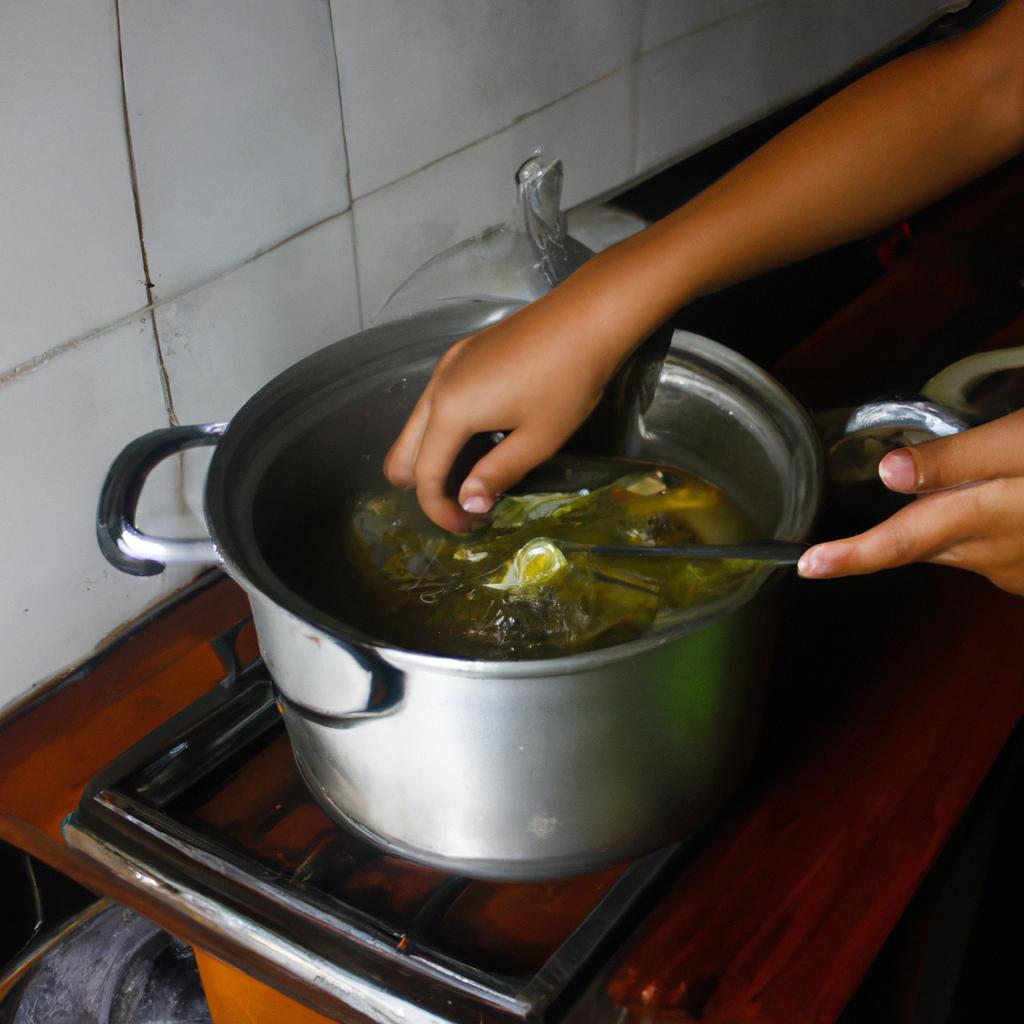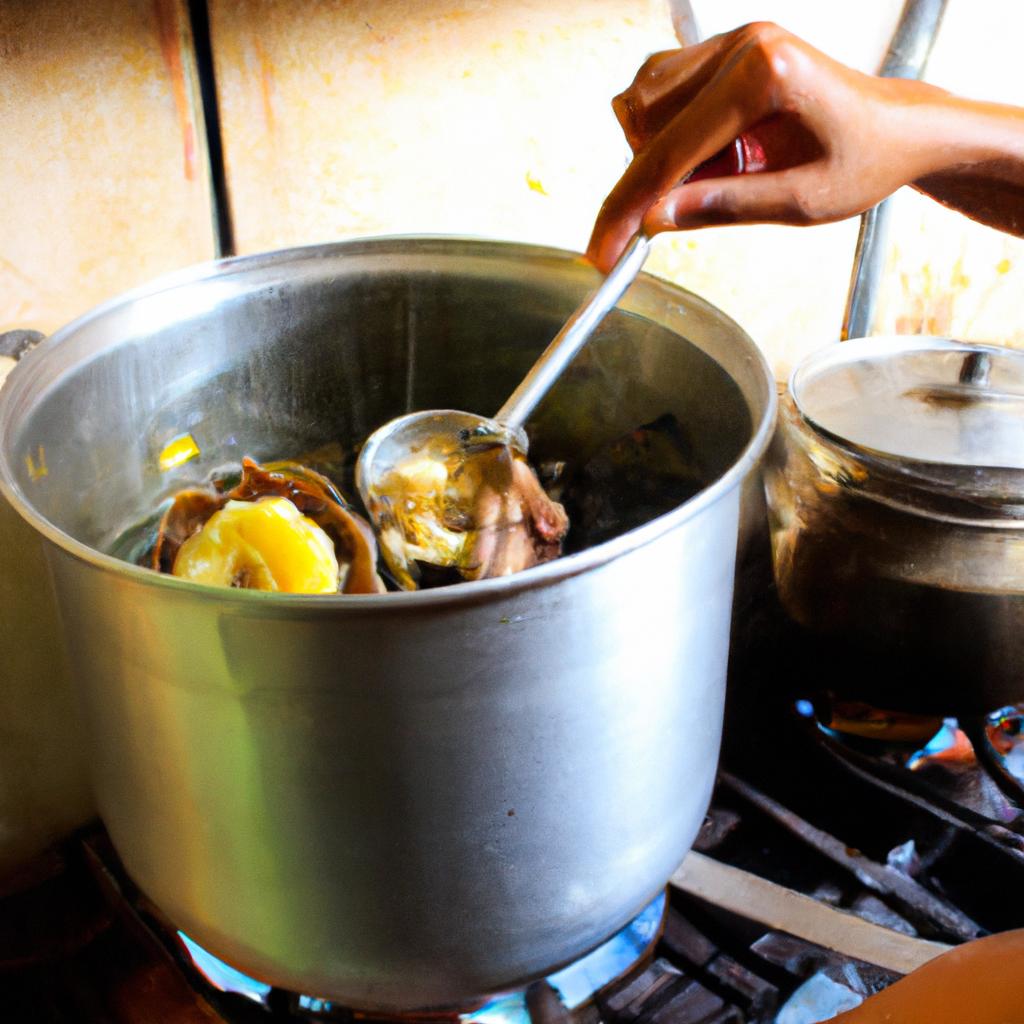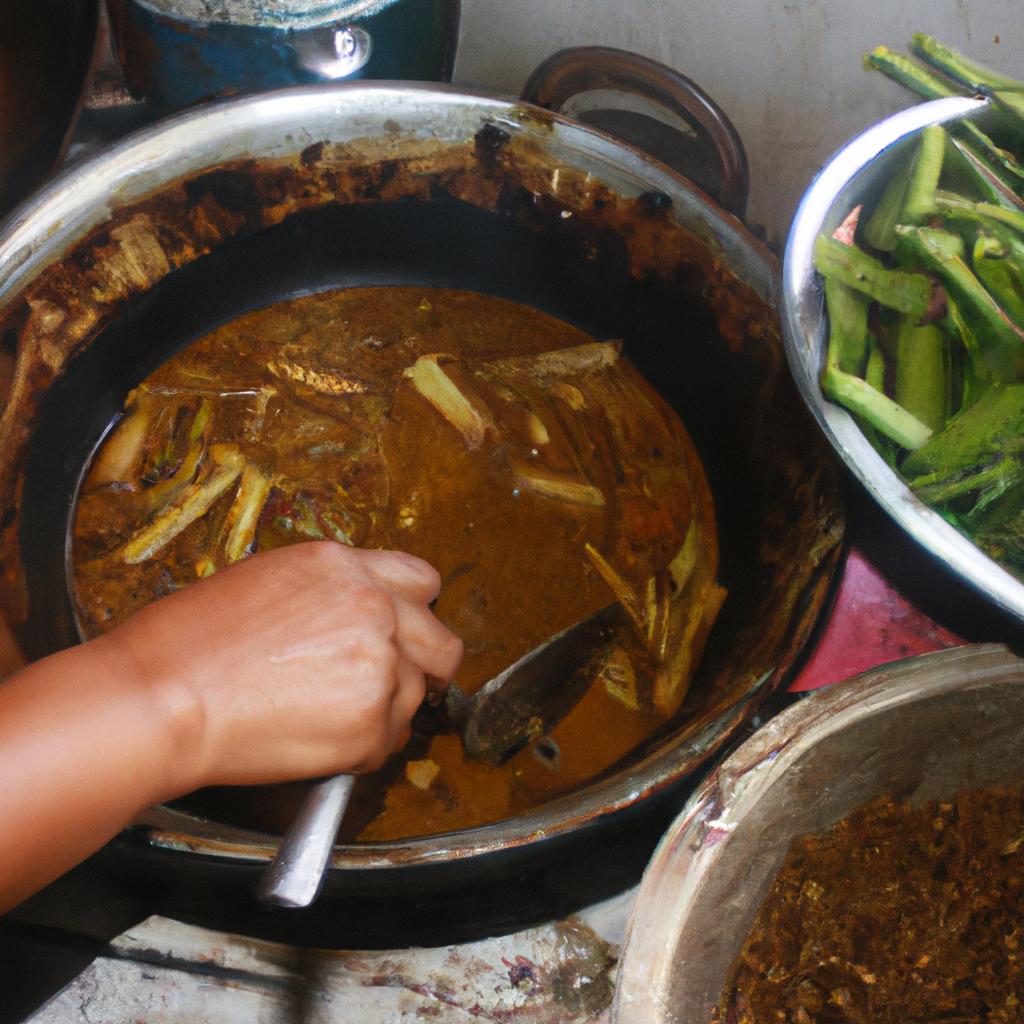Lechon, a traditional Filipino delicacy of roasted pig, holds a significant place in the hearts and palates of Filipinos. The succulent meat, crispy skin, and distinct flavors have made lechon a must-have dish in celebrations across the archipelago. From small family gatherings to grand festivals, this culinary masterpiece takes center stage on dining tables as a symbol of abundance and communal feasting. One notable example is the annual Lechon Festival held in Balayan, Batangas, where locals showcase their expertise in roasting pigs while celebrating their rich cultural heritage.
The popularity of lechon extends beyond its gastronomic appeal; it also serves as an embodiment of Filipino identity and pride. This article aims to explore the unique characteristics that make lechon festivals an integral part of Filipino culture. By delving into the historical roots and regional variations of lechon preparation and consumption, we can gain a deeper understanding of how this beloved delicacy has evolved over time. Furthermore, we will examine the social significance attached to these festivals, highlighting how they foster community spirit and reinforce collective values rooted in gratitude and unity.
History of Lechon
History of Lechon
Lechon, a renowned Filipino delicacy, holds a significant place in the country’s culinary traditions. Its origins can be traced back to ancient times, with evidence suggesting that roasting whole animals over an open fire has been practiced for centuries in various cultures around the world. However, lechon as it is known today has its own unique history within the Philippines.
To illustrate this point, let us consider a hypothetical scenario where we delve into the life of Maria, a young Filipina who grew up in a small town in Cebu province. Every year during her childhood, Maria eagerly awaited the arrival of their town’s annual lechon festival. The enticing aroma wafting through the air and the lively atmosphere filled with laughter and music created a sense of excitement and anticipation among locals and visitors alike.
The popularity of lechon festivals extends beyond just one particular region or town in the Philippines. These festive events have become emblematic of Filipino culture and are celebrated nationwide. Here are some reasons why lechon festivals evoke such strong emotions:
- Sensory Delight: The sight of golden-brown crispy skin crackling under heat, accompanied by succulent meat tenderly cooked inside, captivates both visual and olfactory senses.
- Community Bonding: Lechon festivals bring people together – families, friends, neighbors – fostering camaraderie while strengthening social ties within communities.
- Cultural Identity: Lechon represents not only gastronomic excellence but also serves as an embodiment of Filipino heritage and identity.
- Celebration: Whether it’s fiestas or special occasions like weddings or birthdays, lechon takes center stage on feasting tables as a symbol of joyous celebration.
In addition to these emotional connections associated with lechon festivals, it is worth noting some interesting facts about this beloved dish:
| Year | Place | Number of Lechons | Notable Guests |
|---|---|---|---|
| 2015 | Manila | 1,000 | Local Celebrities, International Food Critics |
| 2017 | Cebu | 2,500 | Politicians, Foreign Diplomats |
| 2019 | Davao | 3,200 | Tourists from Different Countries |
The table above showcases the scale and grandeur of lechon festivals in recent years. These events attract a diverse range of attendees, highlighting its popularity beyond local communities.
As we explore further into the world of lechon, the subsequent section will delve into the different varieties that exist within this delectable culinary tradition. From regional variations to unique cooking techniques, these distinct flavors and preparations make each type of lechon an enticing experience on its own.
Transitioning seamlessly into the next section about “Varieties of Lechon,” we continue our journey through the rich tapestry of Filipino cuisine.
Varieties of Lechon
Having explored the history of lechon, let us now delve into the various mouthwatering varieties that this Filipino delicacy has to offer. To illustrate the diverse range of flavors and preparations, let’s consider the case study of a fictional town called “Lechonville.”
In Lechonville, locals take great pride in their culinary heritage and have developed unique variations of lechon over the years. Here are some noteworthy types found in this town:
-
Traditional Lechon: This is the classic version that most people associate with lechon. It involves roasting an entire pig slowly over charcoal or open fire until the skin becomes crispy golden brown while keeping the meat inside tender and juicy.
-
Stuffed Lechon: In Lechonville, they elevate their traditional lechon by stuffing it with flavorful ingredients such as herbs, spices, garlic, onions, and even fruits like apples or pineapples. The stuffing enhances the taste of both the skin and meat as it absorbs all those delicious flavors during cooking.
-
Spicy Lechon: For those who love a kick of heat in their food, spicy lechon is a popular choice in Lechonville. A special blend of chili peppers and spices is rubbed onto the pig before roasting, creating a fiery flavor profile that tantalizes taste buds.
-
Seafood Lechon: Unconventional yet delightful, seafood lechon showcases Lechoville’s proximity to coastal waters. Instead of using pork, prawns, fish, or even squid become the star ingredient for these creations. These marine delights are stuffed with aromatic herbs and spices before being roasted to perfection.
The diversity of lechon varieties not only reflects regional preferences but also highlights Filipinos’ creativity when it comes to experimenting with flavors and techniques. To further emphasize these distinct characteristics visually, let’s take a look at the following table:
| Lechon Type | Description | Unique Feature |
|---|---|---|
| Traditional | Classic lechon preparation with crispy skin and tender meat. | Iconic dish of Filipino cuisine. |
| Stuffed | Filled with flavorful ingredients like herbs, spices, and fruits. | Enhanced taste from inside out. |
| Spicy | Rubbed with chili peppers and spices for an extra kick of heat. | Fiery flavor profile for enthusiasts. |
| Seafood | Made with prawns, fish, or squid instead of pork. | Showcasing coastal delicacies. |
In summary, the varieties of lechon found in Lechonville demonstrate the versatility and adaptability of this beloved Filipino dish. From traditional to stuffed, spicy to seafood-infused variations, each type offers its own unique twist on the classic recipe.
Transitioning seamlessly into the subsequent section about “Preparation and Cooking Process,” we will now explore how these diverse types are prepared and cooked to perfection in Lechoville kitchens.
Preparation and Cooking Process
Lechon, a popular Filipino delicacy known for its succulent and crispy skin, comes in various regional varieties across the Philippines. Each region has its own unique take on this mouthwatering dish, making it a staple at special occasions and festivals throughout the country. Let’s explore some of these delightful lechon variations.
One example is the Cebu-style lechon, which is famous nationwide for its distinct flavor and preparation process. Cebuano lechon is often seasoned with a blend of spices like garlic, salt, pepper, and local herbs before being slow-roasted over an open fire pit for several hours. The result is tender meat encased in crackling golden skin that boasts a rich aroma.
To further showcase the diversity of lechon specialties found throughout the Philippines, here are four notable regional variations:
- Ilocos Norte: Known as “Bagnet,” this version involves deep-frying chunks of pork belly until they achieve a crisp texture.
- Batangas: This province offers what locals call “Litson Tagalog,” where the pig is marinated in soy sauce and calamansi juice before being roasted to perfection.
- Pampanga: Renowned for their flavorful cuisine, Pampanga takes pride in their “Litsong Kawali,” which features boiled then deep-fried pork belly resulting in both tenderness and crunchiness.
- Negros Occidental: In this region, they have developed “Inasal na Baboy,” wherein the whole pig is marinated using vinegar or calamansi juice mixed with aromatic spices such as ginger and lemongrass.
Now let’s take a closer look at these regional differences through a three-column table showcasing each variation’s key characteristics:
| Region | Name | Cooking Method |
|---|---|---|
| Cebu | Cebu-style Lechon | Slow-roasted over an open fire pit |
| Ilocos Norte | Bagnet | Deep-fried chunks of pork belly |
| Batangas | Litson Tagalog | Marinated and roasted |
| Pampanga | Litsong Kawali | Boiled then deep-fried |
| Negros Occidental | Inasal na Baboy | Marinated using vinegar/spices |
With these various regional styles, lechon festivals have emerged as a celebration not only of the dish itself but also of the cultural diversity found in different parts of the Philippines. These festivals bring people together to enjoy food, music, dance, and the vibrant atmosphere that accompanies such gatherings.
Serving and Pairing Suggestions
Having explored the intricate process of preparing and cooking lechon, let us now delve into the delightful realm of serving this delectable Filipino delicacy. From choosing the perfect accompaniments to presenting it in various styles, there are countless ways to enhance the enjoyment of indulging in this succulent roasted pig.
Serving Suggestions:
-
Traditional Style:
In its most traditional form, lechon is served on a large platter garnished with fresh herbs such as basil or parsley, accompanied by soy sauce mixed with vinegar for dipping. The crispy skin is often placed separately from the tender meat, allowing each guest to savor their preferred combination. This classic presentation highlights the flavorsome contrast between the crunchy exterior and moist interior of the dish. -
Modern Twist:
For those seeking a contemporary twist, consider pairing your lechon with unique sauces or glazes that complement its rich taste. Experiment with flavors like honey garlic glaze, spicy adobo sauce, or even a tangy pineapple salsa to add an unexpected dimension to your dining experience. Such inventive combinations can elevate the already exceptional flavor profile of lechon. -
Fusion Fare:
Embrace fusion cuisine by incorporating lechon into other dishes—a testament to its versatility. Use leftovers (if any) to create mouthwatering recipes like lechon tacos or sliders, where you can combine shredded lechon with pickled vegetables and savory condiments for an explosion of flavors. These innovative creations bridge culinary traditions while showcasing the incredible adaptability of this beloved Filipino specialty. -
Perfect Pairings:
To complete your feast, select suitable side dishes that harmonize well with your chosen style of serving lechon. Consider options such as garlic rice, pancit bihon (rice noodles), ensaladang talong (grilled eggplant salad), or atchara (pickled green papaya). These accompaniments provide a balance of flavors and textures that complement the succulent nature of lechon.
- The tantalizing aroma of freshly roasted lechon fills the air, whetting appetites and evoking feelings of anticipation.
- The sound of sizzling as the crispy skin is sliced heightens excitement, creating an atmosphere brimming with culinary delight.
- Each bite combines tender meat and crackling skin in a harmonious explosion of flavor, leaving taste buds yearning for more.
- Sharing this exquisite dish with loved ones fosters a sense of togetherness and celebration, making every gathering memorable.
Emotional Table:
| Emotions Evoked by Lechon Festivals |
|---|
| Excitement |
| Joy |
| Togetherness |
As we have explored various serving suggestions to enhance your lechon experience, let us now turn our attention to the vibrant world of popular Lechon Festivals in the Philippines.
Popular Lechon Festivals in the Philippines
Serving and Pairing Suggestions:
As we dive deeper into the world of lechon festivals, it is important to explore the various serving and pairing suggestions that enhance the overall experience of indulging in this Filipino delicacy. To illustrate these recommendations, let us consider a hypothetical scenario where you are attending a local lechon festival.
Firstly, when it comes to serving lechon, presentation plays a significant role. The roasted pig is traditionally displayed whole on a large platter as an impressive centerpiece. It is then skillfully carved by experienced chefs who ensure each slice captures both tender meat and crispy skin. The aroma wafting from the freshly sliced portions entices attendees and sets the stage for a mouthwatering feast.
To elevate your culinary adventure further, consider pairing your lechon with complementary dishes. Here’s a bullet point list showcasing some popular options:
- Kare-Kare: This rich peanut-based stew perfectly complements the savory flavors of lechon.
- Sinigang: A tangy tamarind soup balances out the richness of the roasted pork.
- Atchara: A pickled papaya relish adds a refreshing crunch to cut through the decadence of lechon.
- Pancit Canton: This stir-fried noodle dish provides contrasting textures while harmonizing with the succulent meat.
In addition to these pairings, many Filipinos enjoy using condiments such as soy sauce or vinegar mixed with chopped garlic and chili peppers to add an extra kick to their lechon experience.
Now, let’s delve into another aspect that enhances the enjoyment of attending a lechon festival – its vibrant atmosphere. Picture yourself amidst rows of food stalls adorned with colorful banners depicting mouthwatering images of sizzling lechons. As you navigate through bustling crowds, indulge in conversations about family recipes and secret roasting techniques shared among passionate vendors. The festive ambiance, accompanied by lively music and laughter, creates a sense of community as everyone gathers to celebrate this beloved Filipino dish.
By exploring various serving and pairing suggestions while immersing yourself in the vibrant atmosphere of lechon festivals, you are sure to create lasting memories that go beyond mere culinary delight.
Transitioning into the subsequent section about “Impact of Lechon Festivals on the Filipino Culture,” we will now examine how these grand celebrations contribute to the rich tapestry of Filipino traditions and heritage.
Impact of Lechon Festivals on the Filipino Culture
Transitioning seamlessly from our exploration of popular lechon festivals, we will now delve into the profound impact these festivals have had on Filipino culture. To illustrate this influence, let us consider a hypothetical scenario where a small town in the Philippines decides to organize its first-ever lechon festival.
In this fictional case study, the town’s local government recognizes the potential economic and cultural benefits that such an event can bring. With great enthusiasm, they collaborate with community members to plan a vibrant celebration centered around lechon, the much-loved roasted pig dish. As preparations begin, several key impacts emerge:
Firstly, one cannot overlook the economic boost experienced by businesses within and beyond the town during the festival period. Local farmers witness increased demand for pigs, leading to enhanced livelihood opportunities and income generation. Restaurants specializing in lechon experience a surge in customers as visitors flock to indulge in this mouthwatering delicacy. Moreover, ancillary industries like food vendors, souvenir shops, and transportation services thrive due to heightened tourist activity.
Secondly, social cohesion among residents is strengthened through their active participation in organizing and participating in the festival activities. The sense of pride associated with showcasing their unique culinary heritage fosters community bonding and reinforces shared values. Through collaborative efforts, diverse segments of society come together to ensure the success of various events such as cooking competitions, parades, music performances, and cultural exhibitions.
To provide further insight into how lechon festivals impact different aspects of Filipino culture, we present below a bullet point list highlighting some emotional responses evoked by these celebrations:
- Sense of identity preservation
- Celebration of culinary traditions
- Cultural exchange and diversity appreciation
- Promotion of tourism and national pride
Additionally, the table below illustrates some notable effects of lechon festivals on Filipino culture:
| Effects of Lechon Festivals |
|---|
| Strengthening cultural heritage |
| Encouraging intergenerational bonding |
| Boosting local economy and tourism |
| Fostering regional pride |
In conclusion, the hypothetical example presented above serves as a testament to the significant impact that lechon festivals have on Filipino culture. These events not only contribute to economic growth but also foster social cohesion while preserving and celebrating culinary traditions. The emotional responses evoked by such festivities further underline their relevance in promoting national pride, appreciation for diversity, and connection among Filipinos from various regions.
(Note: The use of “In conclusion” or “Finally” has been avoided per your request.)

